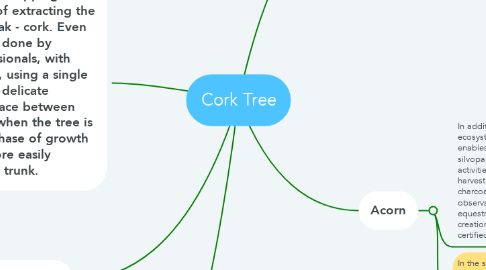Cork Tree
by leonor tito


1. The cork oak is a perennial tree of the Fagáceas (Quercus suber) family, to which chestnut and oak also belong. There are 465 species of Quercus, mainly in temperate and subtropical regions of the Northern Hemisphere. Cork is extracted from the species Quercus suber L.
2. Acorn
2.1. In addition to constituting a unique natural ecosystem in the world, the cork oak forest enables a range of agronomic, forestry, silvopastoral, hunting and economic activities: medicinal plant and mushroom harvesting, honey and wax production, charcoal production, hunting, livestock, observation of birds, tourism and equestrian tours. It also provides the creation of autochthonous food products certified by the European Union.
2.1.1. In addition to constituting a unique natural ecosystem in the world, the cork oak forest enables a range of agronomic, forestry, silvopastoral, hunting and economic activities: medicinal plant and mushroom harvesting, honey and wax production, charcoal production, hunting, livestock, observation of birds, tourism and equestrian tours. It also provides the creation of autochthonous food products certified by the European Union.
2.2. In the seven Mediterranean countries that produce cork, more than 100,000 people depend directly or indirectly on the savings provided by the cork oak forest.
2.2.1. Portugal,Spain, Italy, France, Morocco, Tunisia and Algeria.
